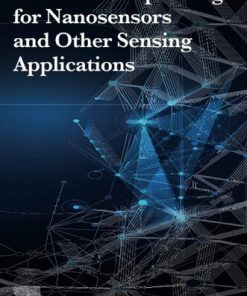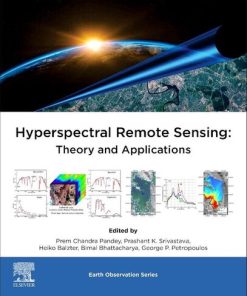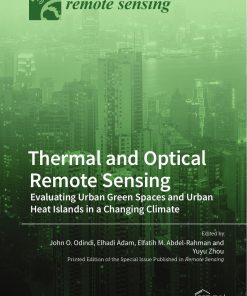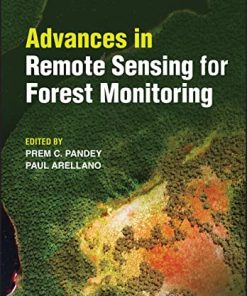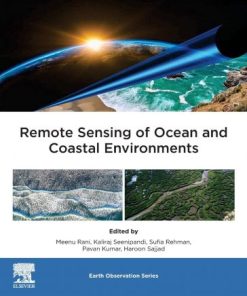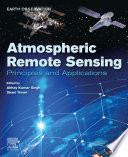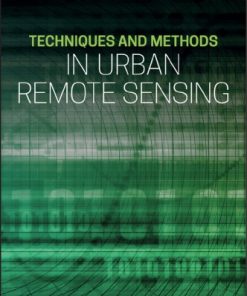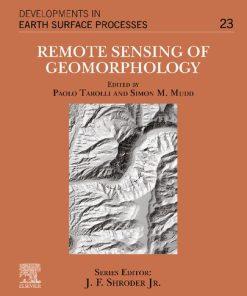Nanotechnology-Based Smart Remote Sensing Networks for Disaster Prevention 1st edition by Adil Denizli, Marcelo Alencar, Tuan Anh Nguyen, David Motaung 0323998284 9780323998284
$50.00 Original price was: $50.00.$25.00Current price is: $25.00.
Nanotechnology-Based Smart Remote Sensing Networks for Disaster Prevention 1st edition by Adil Denizli, Marcelo Alencar, Tuan Anh Nguyen, David Motaung – Ebook PDF Instant Download/DeliveryISBN: 0323998284, 9780323998284
Full download Nanotechnology-Based Smart Remote Sensing Networks for Disaster Prevention 1st edition after payment.
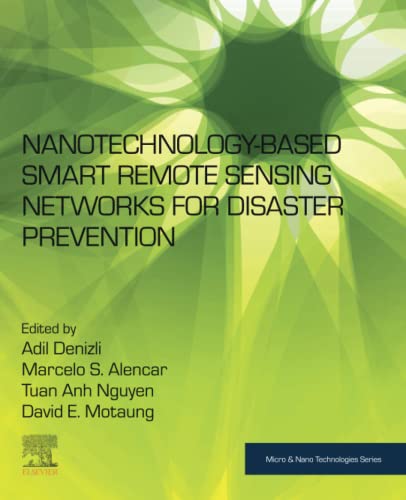
Product details:
ISBN-10 : 0323998284
ISBN-13 : 9780323998284
Author: Adil Denizli, Marcelo Alencar, Tuan Anh Nguyen, David Motaung
Nanotechnology-Based Smart Remote Sensing Networks for Disaster Prevention outlines how nanotechnology and space technology could be applied for the detection of disaster risks in early stages, using cheap sensors, cheap constellations of low Earth orbit (LEO) satellites, and smart wireless networks with artificial intelligence (AI) tools.
Nanomaterial-based sensors (nanosensors) can offer several advantages over their micro-counterparts, such as lower power or self-powered consumption, high sensitivity, lower concentration of analytes, and smaller interaction distances between the object and the sensor. Besides this, with the support of AI tools, such as fuzzy logic, genetic algorithms, neural networks, and ambient intelligence, sensor systems are becoming smarter when a large number of sensors are used.
Nanotechnology-Based Smart Remote Sensing Networks for Disaster Prevention 1st Table of contents:
Section 1: Nanotechnology for disaster prevention
Chapter 1: Application of nanotechnology in disaster prevention: An introduction
Abstract
1.1: Introduction
1.2: Nanotechnology in sustainable agriculture and hunger prevention
1.3: Role of nanotechnology in environmental pollution prevention
1.4: Nanotechnology in harvesting renewable energy
1.5: Nanotechnology in health sector
1.6: Nanotechnology in protection of infrastructures
1.7: Conclusion
References
Chapter 2: Nanomaterials for construction building products designed to withstand natural disasters
Abstract
2.1: Introduction
2.2: Nanomaterials used in the construction
2.3: Traditional materials for construction against disaster
2.4: Sustainable usages of nano-based materials
2.5: Nanomaterials in advanced architecture
2.6: Health aspects of nanomaterials when used in the construction building materials
2.7: Environmental advantages and disadvantages and life-cycle assessment
2.8: Risk assessment and analysis for nanomaterials used in the construction
2.9: Regulations data in various countries
2.10: Conclusion
2.11: Future scope
References
Chapter 3: Nano-sensors and nano-devices for biological disaster monitoring (virus/disease epidemics/animal plagues detections)
Abstract
3.1: Introduction
3.2: Nano-sensors and nano-devices
3.3: The biological disaster monitoring applications
3.4: Conclusions
References
Chapter 4: Internet of Things-based disaster management system
Abstract
4.1: Introduction to disaster
4.2: Classification
4.3: Wireless sensor network and internet of things
4.4: Design challenges of using WSN/IoT in disaster management and possible solutions
4.5: Results and discussion
4.6: Scope for research in disaster management
4.7: Conclusion
References
Chapter 5: Nanosensors for smartphone-enabled sensing devices
Abstract
5.1: Introduction
5.2: Nanosensors
5.3: Nanosensors on smart platforms
5.4: Conclusion and future perspectives
References
Chapter 6: Smart and autonomous (self-powered) nanosensor networks
Abstract
6.1: Introduction
6.2: Technology for self-powered nanosensors
6.3: Applications of self-powered sensors for natural disasters
6.4: Conclusion and remarks
References
Chapter 7: Nanosensors for smartphone sensing method
Abstract
7.1: Introduction
7.2: Applications of nanosensors in smartphones
7.3: Conclusion and remarks
References
Section 2: Space technology for disaster prevention
Chapter 8: Nanotechnology in the space industry
Abstract
8.1: Introduction of nanotechnology in space technology
8.2: Nanomaterials in space industries
8.3: Nanostructures in aero-parts
8.4: Summary
References
Chapter 9: Unmanned aerial vehicles (UAVs) for disaster management
Abstract
9.1: Introduction
9.2: UAV advancement for disaster management
9.3: UAV-assisted communication network for disaster management
9.4: Disaster types and phases
9.5: Case studies
9.6: Conclusions
References
Chapter 10: The role of satellite remote sensing in natural disaster management
Abstract
10.1: Introduction
10.2: Remote sensing data and techniques to access natural disasters
10.3: Conclusions
References
Chapter 11: The synergy of remote sensing and geographical information systems in the management of natural disasters
Abstract
11.1: Introduction
11.2: The synergy of remote sensing and GIS in the management of natural disasters
11.3: Conclusions
References
Chapter 12: Small satellites for disaster monitoring
Abstract
12.1: Introduction
12.2: Remote sensing platforms
12.3: A taxonomy of disasters
12.4: Enabling technologies
12.5: Conclusions
References
Chapter 13: A comparative study of deep learning-based time-series forecasting techniques for fine-scale urban extreme heat prediction using Internet of Things observations
Abstract
13.1: Introduction
13.2: Data
13.3: Methods
13.4: Training and evaluation
13.5: Experiment result
13.6: Conclusions
References
Chapter 14: Satellite and aerial remote sensing in disaster management: An introduction
Abstract
14.1: Introduction
14.2: Data and methods
14.3: Results
14.4: Conclusions
References
Chapter 15: Emerging role of unmanned aerial vehicles (UAVs) for disaster management applications
Abstract
15.1: Introduction
15.2: Disaster management cycle
15.3: Unmanned aerial vehicles (UAVs)
15.4: Overview of UAV sensors
15.5: UAV regulations
15.6: UAV hardware considerations
15.7: Applications of UAVs in disaster management
15.8: Future applications and challenges
References
Chapter 16: Smart remote sensing network for early warning of disaster risks
Abstract
Acknowledgment
16.1: Introduction
16.2: Remote sensing network architecture
16.3: Utilizing machine learning for smart sensing
16.4: UAV potential in early warning systems
16.5: Conclusion
People also search for Nanotechnology-Based Smart Remote Sensing Networks for Disaster Prevention 1st:
nanotechnology-based strategies against sars-cov-2 variants
nanotechnology and smart textiles
nanotechnology-based treatment
smart nano-bio-devices research group
smart nanotubes technologies
Tags: Nanotechnology Based, Networks, Disaster Prevention, Adil Denizli, Marcelo Alencar, Tuan Anh Nguyen, David Motaung
You may also like…
Chemistry
Molecular Imprinting for Nanosensors and Other Sensing Applications 1st Edition Adil Denizli
Optics & Laser
Chemistry
Plasmonic Sensors and their Applications 1st edition by Adil Denizli 3527348476 978-3527348473
Biology and other natural sciences - Plants: Agriculture and Forestry
Advances in Remote Sensing for Forest Monitoring 1st Edition Prem C. Pandey
Biology and other natural sciences - Ecology
Astronomy - The Solar System - Astronomical Studies & Observations




